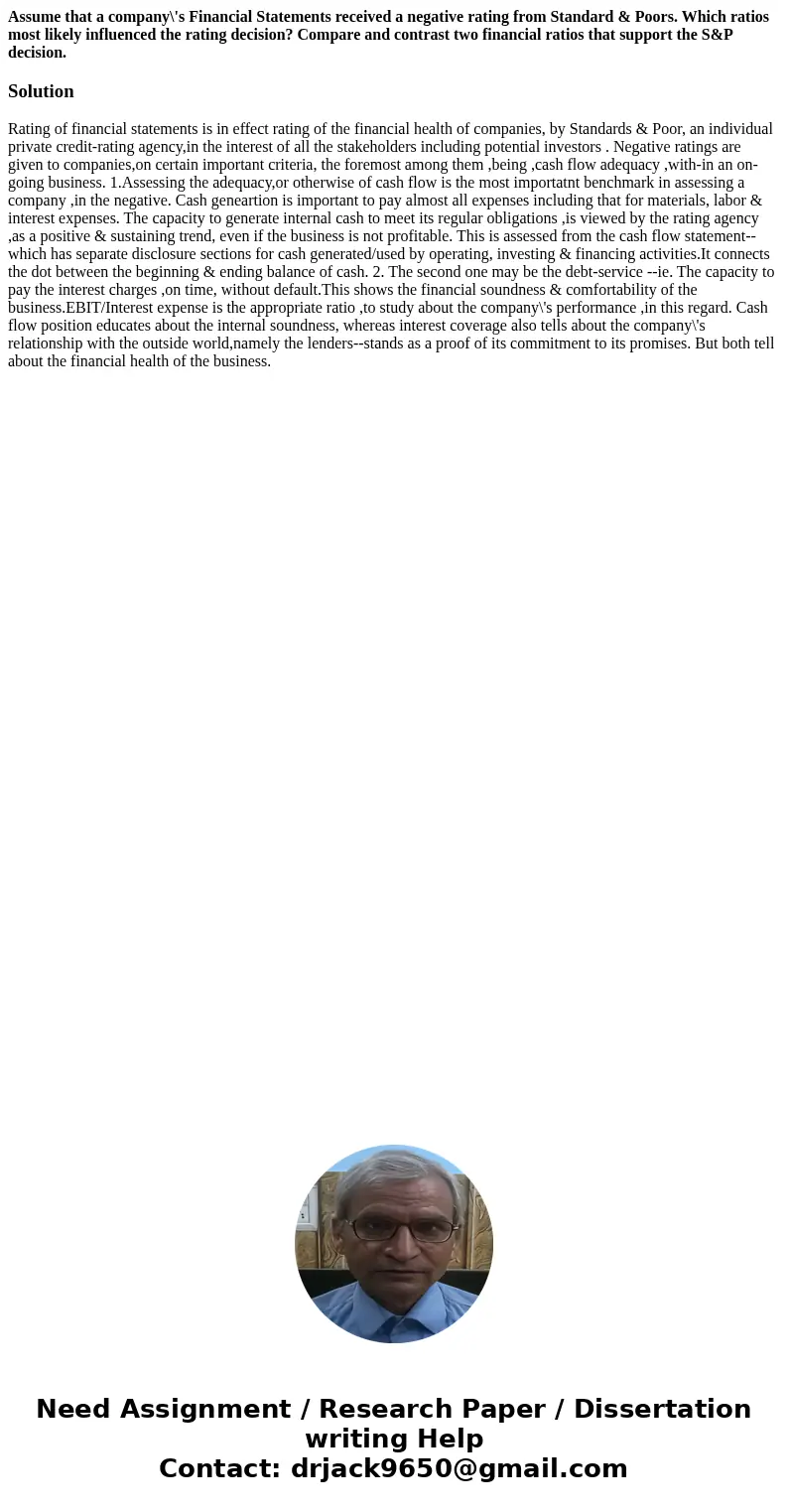Assume that a companys Financial Statements received a negat
Assume that a company\'s Financial Statements received a negative rating from Standard & Poors. Which ratios most likely influenced the rating decision? Compare and contrast two financial ratios that support the S&P decision.
Solution
Rating of financial statements is in effect rating of the financial health of companies, by Standards & Poor, an individual private credit-rating agency,in the interest of all the stakeholders including potential investors . Negative ratings are given to companies,on certain important criteria, the foremost among them ,being ,cash flow adequacy ,with-in an on-going business. 1.Assessing the adequacy,or otherwise of cash flow is the most importatnt benchmark in assessing a company ,in the negative. Cash geneartion is important to pay almost all expenses including that for materials, labor & interest expenses. The capacity to generate internal cash to meet its regular obligations ,is viewed by the rating agency ,as a positive & sustaining trend, even if the business is not profitable. This is assessed from the cash flow statement--which has separate disclosure sections for cash generated/used by operating, investing & financing activities.It connects the dot between the beginning & ending balance of cash. 2. The second one may be the debt-service --ie. The capacity to pay the interest charges ,on time, without default.This shows the financial soundness & comfortability of the business.EBIT/Interest expense is the appropriate ratio ,to study about the company\'s performance ,in this regard. Cash flow position educates about the internal soundness, whereas interest coverage also tells about the company\'s relationship with the outside world,namely the lenders--stands as a proof of its commitment to its promises. But both tell about the financial health of the business.
 Homework Sourse
Homework Sourse